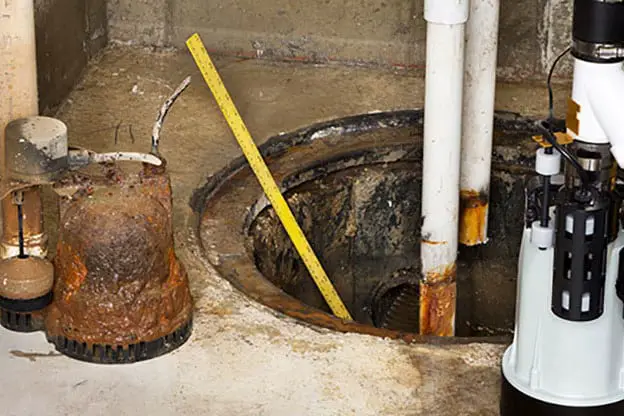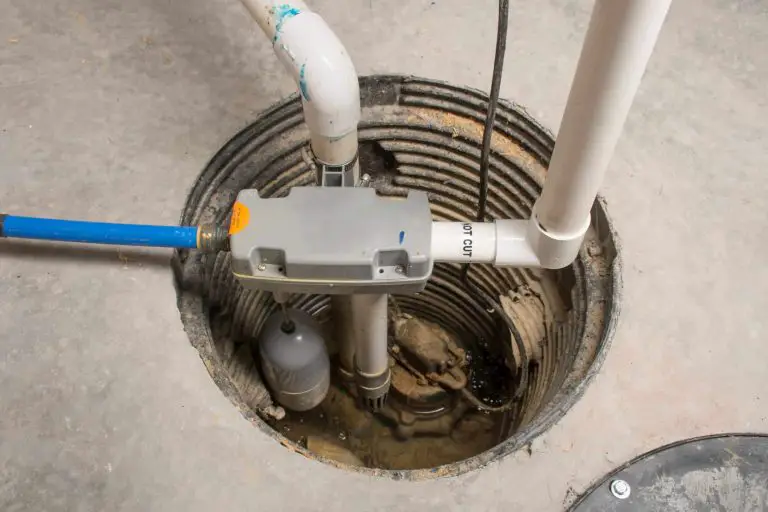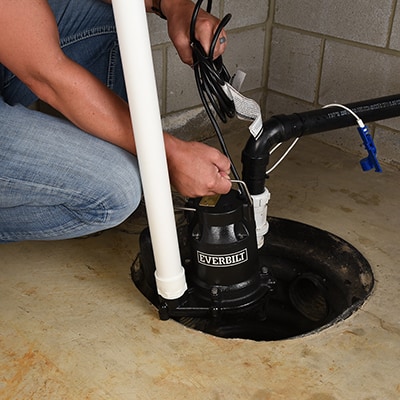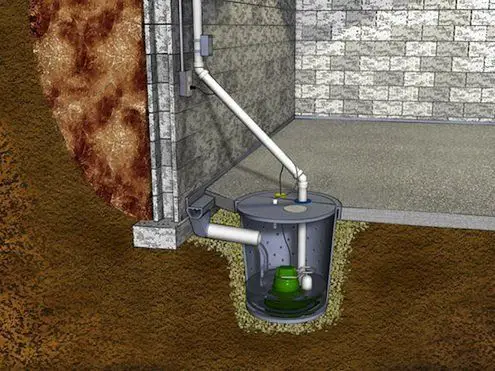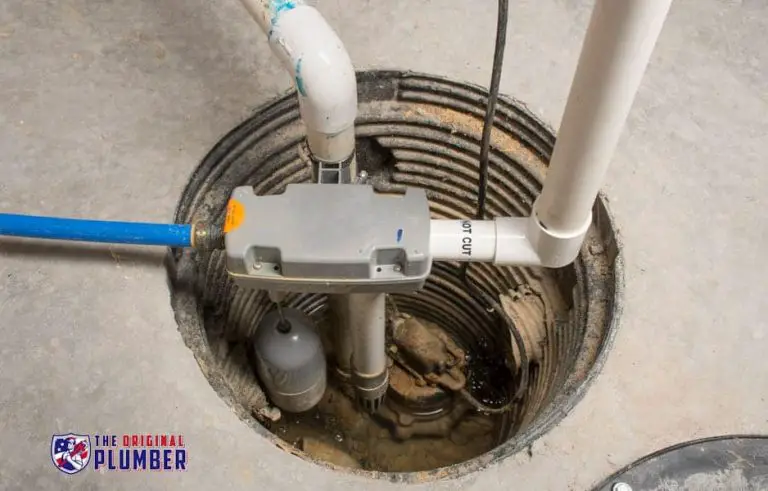How Often Should a Sump Pump Be Tested
A sump pump is a vital component of any home that has a basement. The sump pump’s job is to remove water that has accumulated in the sump pit and to prevent flooding. Because the sump pump is such an important part of your home’s flood prevention system, it is important to test it regularly to ensure that it is working properly.
How often you need to test your sump pump depends on a few factors, including how often your home floods and how old your sump pump is. If you live in an area with a high water table or if your home frequently floods, you should test your sump pump more often. If your sump pump is newer, you can test it less frequently.
If you have a sump pump in your home, it’s important to keep it well-maintained to avoid any flooding disasters. One key part of maintaining your sump pump is testing it regularly. How often should you test your sump pump?
Ideally, you should test your sump pump once a month. To do this, simply pour a bucket of water into the sump pit and make sure that the pump kicks on and starts draining the water out. If everything looks good, then your pump is working as it should.
However, if you live in an area with heavy rains or potential flooding (such as near a river or stream), you may want to test your sump pump more often – perhaps even weekly during the wetter months. This way, you can be sure that it will be ready to go when you need it most.
Remember: A working sump pump could mean the difference between a minor cleanup job and a major disaster.
So make sure to test yours regularly!
6 Things Sump Pump Owners NEED to Know
How Often Should a Sump Pump Be Cleaned
Sump pumps are one of the most important pieces of equipment in a home, especially if that home is located in an area prone to flooding. Sump pumps are used to pump water out of a basement or crawlspace and keep the area dry.
While sump pumps are built to last, they do require some maintenance in order to function properly.
One important part of maintaining a sump pump is keeping it clean. But how often should a sump pump be cleaned?
Ideally, a sump pump should be cleaned at least once a year.
However, if your home is located in an area with high water table or you have had recent flooding, you may need to clean your sump pump more frequently.
Cleaning a sump pump is relatively simple and only takes a few minutes. First, you’ll want to disconnect the power supply to the pump.
Next, remove any debris that has collected in the pit, such as stones or sticks. Then, use a garden hose to flush out the pit and remove any mud or sediment that has built up inside. Finally, reattach the power supply and turn on the pump to make sure it’s working properly.
By following these simple steps, you can ensure that your sump pump will continue to work properly for years to come!
How to Force a Sump Pump on
If you have a sump pump in your home, it is important to know how to force it on. This can be useful if the power goes out and you need to get the water out of your basement quickly. Here are some instructions on how to do this:
1. Locate the breaker box for your sump pump and flip the switch to “off.”
2. Remove the cover from the sump pit so that you can access the float switch.
3. Use a long pole or stick to push the float switch down into the “on” position.
4. Plug in a portable generator to an outlet near your sump pump (if you have one). If not, skip this step.
How to Test a Sealed Sump Pump
A sump pump is a device that is used to remove water that has accumulated in a sump pit. The water is typically pumped out of the pit and away from the home or business. Sump pumps can be found in the basements of homes, as well as in commercial buildings.
There are two types of sump pumps: submersible and pedestal. Submersible pumps are designed to be placed underwater in the sump pit. Pedestal pumps are designed to be placed above ground, outside of the pit.
Sealed sump pumps are becoming increasingly popular due to their many benefits. Sealed sump pumps are more energy efficient than non-sealed models, they’re less likely to freeze during winter months, and they offer better protection against flooding since they’re not susceptible to power outages.
If you’re considering purchasing a sealed sump pump, it’s important that you know how to properly test it before installation.
Here’s a step-by-step guide on how to test a sealed sump pump:
1) Fill the sump pit with water using a garden hose. Make sure that the water level is higher than the float switch activation point.
Most float switches will activate when the water level reaches about 2 inches below the rim of the pit.
2) Plug in the pump and wait for it to start running. The initial startup may take a few seconds longer than usual since the pump needs time to build up pressure before it can start moving water.
3) Observe the pump while it’s running.
Sump Pump Maintenance
If you have a sump pump in your home, it’s important to keep it well-maintained. A sump pump helps to remove water from your basement or crawl space, and prevents flooding. Here are some tips for maintaining your sump pump:
1. Check the power source. Make sure that your sump pump is plugged into an outlet, and that the circuit breaker is not tripped.
2. Test the pump regularly.
Pour a bucket of water into the sump pit, and make sure that the pump turns on and starts draining the water.
3. Clean the intake screen regularly. This screen prevents debris from entering and clogging up the pump.
Simply remove it and rinse it off with a hose or in a sink full of water.
4. Inspect the discharge pipe regularly. Make sure that there are no blockages preventing water from flowing out of the pipe.
Also check for any cracks or leaks in the pipe itself.
Sump Pump Maintenance Cost
Most homeowners don’t give their sump pumps a second thought – until they fail. Then, they’re faced with the cost of repair or replacement.
Sump pumps are relatively simple devices, but they do require some maintenance to keep them running properly.
The good news is that most of this maintenance can be done by the homeowner, and it doesn’t have to be expensive.
Here are some tips for keeping your sump pump in top condition:
– Check the discharge pipe regularly to make sure it’s not clogged.
Leaves and debris can build up over time and cause blockages. – Make sure the float switch is free to move up and down. This switch turns the pump on and off, so if it gets stuck in one position, the pump won’t work properly.
– Inspect the impeller (the part that actually moves the water) yearly to make sure it’s not damaged or corroded. – Replace the batteries in your battery backup system every two years, even if they don’t seem to be weak yet. You don’t want to be caught without a working sump pump during a storm!
Following these simple tips will help extend the life of your sump pump and save you money in the long run.
Sump Pump Only Has One Cord
Most sump pumps on the market today come with two cords. One is for the pump itself, and the other is for the float switch. The float switch is what turns the pump on and off as the water level in the sump pit rises and falls.
However, there are some pumps on the market that only have one cord. These types of pumps are called “direct-wire” or “hard-wired” pumps. They are wired directly to your home’s electrical system instead of using a plug-in outlet.
If you’re thinking about buying a direct-wire pump, there are a few things you should know before making your purchase. First, direct-wire pumps must be installed by a qualified electrician. Second, they typically cost more than plug-in models.
Finally, if your power goes out, your direct-wire pump will not work unless you have a backup generator.
If you decide that a direct-wire pump is right for you, be sure to buy one from a reputable manufacturer. Installation instructions should be included with the product, and it’s always best to hire a professional electrician to handle the job.
How to Test a Sump Pump With a Multimeter
If your home is prone to flooding or you live in an area with a high water table, you may have a sump pump installed in your basement. This device helps to keep your basement dry by pumping water out of it and away from your foundation. While most sump pumps are reliable, they do require occasional maintenance and testing to ensure they are working properly.
One way to test your sump pump is with a multimeter. First, find the float switch on your sump pump. This is the component that turns the pump on and off as the water level rises and falls.
The float switch will usually have two wires attached to it.
Next, set your multimeter to the ohms setting and touch one probe to each wire on the float switch. If the reading is zero, this indicates that the switch is working properly.
If you get a reading of infinity, this means there is an open circuit and the switch needs to be replaced.
You can also use a multimeter to test the actual sump pump itself for continuity. To do this, disconnect the power supply to the pump and remove any debris from around it so you can access the wiring.
Once again, set your multimeter to ohms and touch one probe to each wire coming from the motor of the sump pump. A reading of zero means that there is continuity and thatthe motor is likely working fine.
Sump Pump Maintenance Checklist
If you have a sump pump in your home, it’s important to keep it well-maintained to ensure it will work properly when you need it. Here is a checklist of maintenance tasks to keep your sump pump in top condition:
1. Check the power source.
Make sure the pump is plugged in and that the outlet is working. If you have a backup battery, check that it is charged and ready to go.
2. Inspect the float switch.
This switch activates the pump when water levels rise, so make sure it is free of debris and able to move freely up and down.
3. Test the pump regularly. Pour some water into the sump pit and make sure the pump turns on and starts pumping out water within a few seconds.
4. Keep an eye on discharge lines. These lines carry water away from your home, so make sure they are clear of any blockages or leaks. Clean out any debris that may have accumulated over time.
5 .Change the oil yearly . Just like any other mechanical device, your sump pump needs fresh oil periodically to keep things running smoothly .
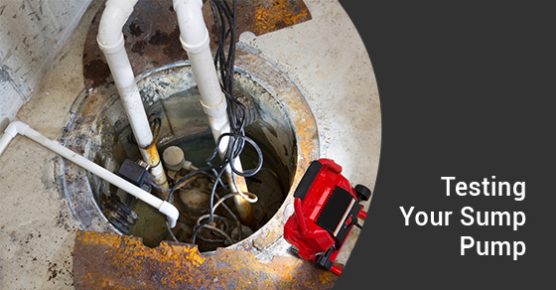
Credit: www.advancedplumbing.ca
How Often Do Sump Pumps Need to Be Checked?
If you have a sump pump, it’s important to check it regularly to make sure it’s working properly. Depending on the type of sump pump you have, you may need to check it once a month or so. If your sump pump is used frequently or if it’s located in an area with a lot of dirt and debris, you may need to check it more often.
To check your sump pump, first make sure that the power is turned off. Then, remove the cover from the pit and inspect the float switch. If the float switch is stuck, simply unplug the unit and clean off any debris that may be causing it to stick.
Once you’ve checked the float switch, put the cover back on the pit and turn on the power.
Next, slowly pour some water into the pit until the float switch activates and starts pumping out water. You should hear air rushing into the discharge pipe as well as see water being pumped out through it.
If everything seems to be working properly, turn off the power and replace the cover on the pit.
If your sump pump doesn’t seem to be working properly or if you have any questions about how often you should be checking it, consult your owner’s manual or contact a professional for assistance.
What is the Best Way to Test a Sump Pump?
A sump pump is a device that is installed in the lowest part of a basement or crawlspace to remove any accumulated water. Sump pumps are used to prevent flooding and/or water damage by redirecting water away from homes and businesses. There are two types of sump pumps: submersible and pedestal.
The best way to test either type of sump pump is to pour water into the pit until the float activates the pump. The pump should turn on, and within 10 seconds, the water should start being discharged out of the pipe. If the pump does not turn on, or if it takes longer than 10 seconds for the water to start being discharged, then there may be an issue with the pump and it should be checked by a professional.
How Do I Test My Basement Sump Pump?
If you have a basement sump pump, it’s important to test it regularly to make sure it’s in good working order. There are a few different ways you can do this:
1. One way is to pour a bucket of water into the sump pit and see how long it takes for the pump to kick on and start draining the water.
If everything is working properly, the pump should turn on within a few seconds.
2. Another way to test your sump pump is to use an air compressor to blow air into the pit. This will simulate heavy rain and help test whether or not the pump can handle a high water volume.
3. Finally, you can also try running some water through the discharge pipe while the pump is turned off. This will help clear any debris that may be stuck in there and ensure that water can flow freely through when the pump is turned on.
Whichever method you choose, testing your sump pump regularly is crucial to keeping your basement dry and free of flooding damage.
What is the Average Life of a Sump Pump?
Sump pumps are devices that are typically used to remove water that has accumulated in a sump basin, usually located in the basement of a home. The average lifespan of a sump pump is around 10 years, but this can vary depending on the make and model of the pump as well as how often it is used and maintained.
To get the most out of your sump pump, it is important to perform regular maintenance on the device.
This includes regularly checking the float switch and making sure there is no debris blocking the inlet or outlet. It is also a good idea to test your sump pump periodically by pouring some water into the basin and making sure that the pump activates and drains properly.
Conclusion
Homeowners should test their sump pumps at least once a year, preferably in the spring. Testing is simple: just pour a few gallons of water into the sump pit, and make sure the pump turns on and drains the pit within a minute or two. If the pump fails this test, it may need to be replaced.

